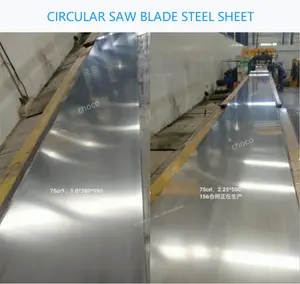
China Manufacturer Scraper Trowel SAE 1095 SAE 1075 Carbon Steel Strip Cold Rolled Spring Steel Strip Coil


Fecral Alloy Foil Kan A1 D 0cr23al5 0cr25al5 0cr21al6nb Flat Resistance Wire Strip For Industry Furnace Heating Element And Elec












Copper strips are integral components in various industrial applications due to their excellent electrical conductivity and thermal conductivity. These strips serve as crucial elements in electrical transformers, switchgear, and other electrical apparatuses where efficient energy transfer is paramount. The versatility of copper strips extends to their use in architectural designs, where their corrosion resistance is highly valued.
The manufacturing of copper strips involves several materials to cater to diverse industrial needs. Predominantly made from pure copper, these strips can also include alloys for enhanced properties. The selection of a copper strip often depends on its intended use, with considerations given to factors such as material purity, alloy composition, and temper. The adaptability of copper allows it to be combined with other metals to meet specific conductivity requirements or mechanical strength demands.
Copper strips boast a range of features that make them suitable for a wide array of applications. Their natural ability to resist environmental corrosion makes them durable over long periods, even under aggressive conditions. This durability is complemented by the ease with which copper can be shaped, cut, and joined, allowing for custom fabrication into various forms and dimensions. The inherent properties of copper strips make them an excellent choice for applications requiring minimal maintenance and long-term reliability.
Selecting the appropriate copper strip for your application requires an understanding of its material properties. Factors such as thickness, width, and the presence of coatings can influence the strip's performance in specific environments. For electrical applications, the emphasis is on high conductivity and purity, while structural uses may prioritize mechanical strength and formability. It is essential to consider the operational environment of the copper strip to ensure optimal performance and longevity.
The ecological aspect of using copper strips is noteworthy. Copper's ability to reach a weathering equilibrium allows it to resist corrosion without the need for additional protective measures, which can be beneficial in reducing maintenance costs and environmental impact. Furthermore, copper is a sustainable material, as it is highly recyclable without losing its valuable properties, making copper strips a responsible choice for environmentally conscious industries.
The malleability of copper strips is a significant advantage, allowing for easy customization to meet specific industrial requirements. Whether it is for intricate components in electronics or large-scale architectural features, copper strips can be fabricated using common processes such as rolling, bending, and stamping. This flexibility in fabrication ensures that copper strips can be tailored to the precise needs of any project.